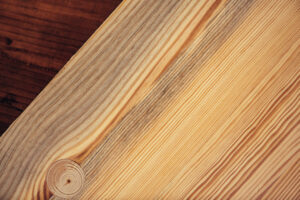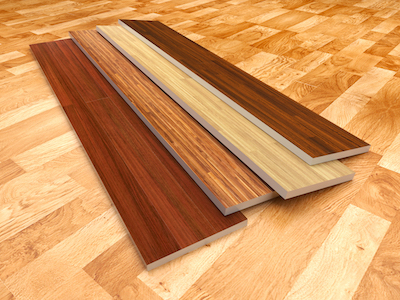First, lets be clear that both products are made from wood. However, the way in which they are manufactured is different and each have applications in which they shine above the other.
Hardwood Flooring
Traditional hardwood flooring is what most think of when you think of wood flooring. It is a solid piece of wood which is graded as flooring quality at the mill. It is planed and given the tongue and groove prior to either being treated at the mill or sent off for distribution as unfinished flooring.
Pros:
- The “gold standard” of flooring for return on investment/resale value
- Can be sanded and refinished many times during its lifetime
Cons:
- Susceptible to changes in humidity
- natural wood comes with natural flaws
Engineered Flooring: 
Engineered wood flooring is still made of wood, and those without a trained eye likely would not know the difference. Engineered flooring uses a genuine wood veneer glued to the top of several layers of wood and sometimes other fibers (think plywood). Engineered flooring is sold in thicknesses ranging from 3/8” to 3/4” thick, with the 3/4” allowing as much sanding as the same thickness traditional hardwood over the course of its life.
Pros:
- Layered composition allows for application in multiple climates as it can adapt to changing humidity
- Better suited for wide plank floors
- Installation options vary, including glue down, floating, and traditional fasteners
- more environmentally friendly as more of the tree can be used to produce than traditional hardwood.
Cons:
- Thorough research is needed to ensure you are purchasing quality material as there are a lot of “cheaper” options out there that lead to less quality material and ultimately quicker replacement costs. This is where a professional wood floor installer is essential.
If you are looking for a floor that offers beauty and longevity, either of these wood options far exceeds other flooring options. The solid hardwood will give you a more classic look, while engineered flooring allows you to install in more locations such as a basement and adapts to humidity changes which is especially important in climates that experience drastic seasonal changes.

